Drug Addiction Destroys Lives
Life is Precious
Say "NO" To Drugs
What are Drugs?
The Drug Problem
Causes of Drug Addiction
Risk and Protective Factors
The First Time Drug User
What is Drug Addiction?
The Scientific Basis of Drug Addiction
The Physical Impact of Drug Addiction
Signs and Symptoms of Drug Addiction
Treatment of Drug Addiction
Preventing a Relapse
Prevention of Drug Addiction
Frequently Asked Questions (FAQs)
Published by:
D. K. Sikri, Secretary
Radha Soami Satsang Beas
Dera Baba Jaimal Singh
Punjab 143 204, India
© 2024 Radha Soami Satsang Beas
All rights reserved
First edition 2024
Any part of this booklet may be copied, reproduced or adapted to meet local needs, without permission from the publisher, provided the parts reproduced are distributed free or at cost – not for profit.
For any reproduction with commercial ends, permission must first be obtained from the publisher. The publisher would appreciate being sent a copy of any material in which text from this booklet has been used.
This booklet is intended for your information only, not as a substitute for medical advice. Always be sure to seek medical advice when you need it.
Times have changed and so have the means of entertainment. In earlier times, children used to read books and play outdoor games like cricket, hockey, football, and athletics, during their free time. There were no video games, mobile phones, TVs, laptops, tablets, i-pads and other electronic devices. Parents would spend time with their children and actively involve themselves in their children’s education, games, hobbies, and interests. Family bonding was founded on shared values and love for each other. Simple activities like family picnics, movie outings, and leisurely gatherings sufficed for relaxation and rejuvenation.
However, today’s scenario is totally different. Everybody’s attention is consumed by their smartphones, laptops, tablets, iPads, and other electronic devices. Children spend extensive hours engrossed in video games, and practically everybody else is lost in the virtual world of social media like Instagram, TikTok, SnapChat, Facebook, WhatsApp, and YouTube. The warmth of familial and social connections is a distant dream as people grapple with their own stress and worries — both perceived and actual.
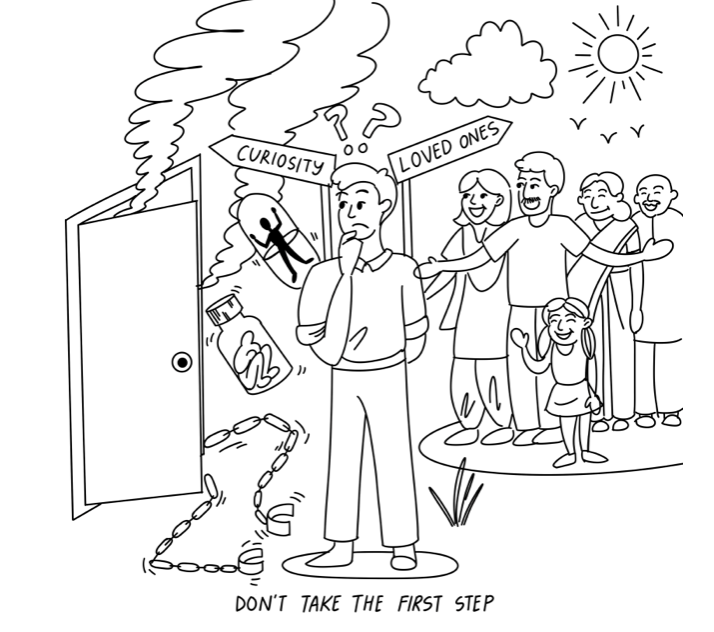
There is hardly any interaction between parents and their adolescent children, who tend to be absorbed in their own world. Often, parents remain oblivious to their children’s friendships and social engagements because of time constraints from their own professional commitments. This disconnect leads families to drift apart, which becomes a prelude to children developing risk-taking behaviours and indulging in experimentation in peer-group situations. This environment facilitates the introduction of smoking, alcohol, and drugs into a youngster’s life. In this fast-paced era marked by intense competition and mounting stress, there is a need for healthy engagements, creative pursuits, hobbies, and meaningful socio-cultural interaction. Open and frank communication between parents and their children, along with parental guidance and emotional support to overcome their everyday doubts, fears, worries, and stresses is a must to foster a feeling of warmth and connection in families. Parents must guide their children to develop the right values, discipline, and focus to persevere with their academic, sporting, socio-cultural, and long-term goals. Remaining busy in such constructive pursuits will help children to develop a positive mindset and minimise the likelihood of succumbing to negative influences and engaging in reckless, risk-taking behaviour.
What are Drugs?
The consumption of drugs can result in an alteration of a person’s mental or physical condition. Drugs can have a profound impact on our brain, influencing our emotions, behaviour, cognition, and perception. They can affect the way our brain works, how we feel and behave, our understanding, and our senses. This makes the drug users unpredictable and dangerous, especially the youth.
These substances disrupt the delicate regulation of emotions and motivation underlying normal behaviour. A person gradually loses touch with reality. Drug-induced artificial sensations of relief, pleasure, contentment, and relaxation take over. Moreover, many drugs alter a person’s cognitive abilities and sense of judgement, posing health risks including addiction, impaired driving, susceptibility to infectious diseases, and adverse effects on pregnancy.
The Drug Problem
Drug addiction or substance use disorder (SUD) is a complex, multifaceted, and dynamic problem. Substance abuse has become more widespread and complex in the modern era. The debilitating physical, mental, and behavioral consequences have left indelible scars on society.
Millions of Indians are dependent on alcohol, cannabis, and opiates. Drug misuse is a deeply embedded societal problem. Alcohol, cannabis, opium, and heroin are the major drugs in India, while buprenorphine, propoxyphene and heroin are the commonly injected drugs.
The availability and consumption of different types of dangerous drugs in our country has increased manifold over the last 2-3 decades. By 2004, the count of drug addicts in India had reached a staggering 7.5 crore. This included 10 lac registered heroin addicts (unofficial estimates put it at 50 lac). Most of them were in the 18-35 age group, a critical, productive phase of life.
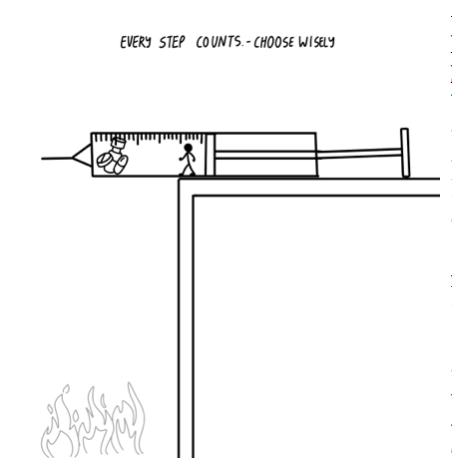 Applying estimates of prevalence to the population figures at that time (of just over 100 crore), there were 6.25 crore alcohol users, 87.5 lac cannabis users, 20 lac opiates users and 6 lac sedatives/hypnotics users nationwide. Among these figures, an estimated 17-26% could be classified as dependent users who needed urgent treatment.
Applying estimates of prevalence to the population figures at that time (of just over 100 crore), there were 6.25 crore alcohol users, 87.5 lac cannabis users, 20 lac opiates users and 6 lac sedatives/hypnotics users nationwide. Among these figures, an estimated 17-26% could be classified as dependent users who needed urgent treatment.
The practice of injecting drugs was fairly widespread throughout the country, with reports of Injecting Drug Users (IDUs) emerging from rural India as well. Sharing of needles was common, with an average of three IDUs sharing needles.
The potential number of people seeking treatment—about 5 lac opiate users, 23 lac cannabis users, and 1.05 crore alcohol users—posed a significant challenge. Encouraging millions of drug users in the community to step forward, get informed, and seek treatment became an imperative task.
Almost two decades later, our population has crossed 140 crore, witnessing an exponential rise in drug abuse. The challenge to contain the drug menace in our society has increased enormously as the socio-economic factors and other conducive elements have significantly fueled the problem of drug addiction.
Punjab ranks third in the state-wise number of registered drug-related FIRs in India from 2019-21, after UP and Maharashtra.
The prevalence of substance abuse within a study group in Punjab was reported at 65.5%. The most common substance abused was alcohol (41.8%) followed by tobacco (21.3%). Notably, a substantial number of individuals were also found to be heroin abusers (20.8%). Additionally, the prevalence of non-alcohol and non-tobacco substance abuse stood at 34.8%. Other substances commonly abused were bhukki (11%), bhang (6.3%), charas and ganja (1.5% each).
The study highlighted a significant association between drug abuse and factors such as the male gender, illiteracy, and age above 30 years. An AIIMS study estimates the number of opioid users in Punjab to be more than 7 lac.
Overall, nearly 11 lac individuals aged 18 and above in Punjab (as of the year 2016) were identified as needing de-addiction services. Of these, 7.5 lac were suffering from alcohol use disorders, while 2.3 lac were victims of other illicit substances. Heroin, opium, poppy husk (bhukki), cannabis (bhang), and pharmaceutical drugs like tramadol and buprenorphine were the commonly abused drugs.
Recent studies suggest that a majority of drug addicts in Punjab are predominantly hooked on heroin, indicating an increased addiction to synthetic drugs as compared to natural drugs.
In Punjab, about 72% of the addicts surveyed fell within the 15-35 age bracket. Among them, 27% were educated up to Class VIII, while 50% had completed education between Class X and XII. The study revealed that 10% started taking drugs before the age of 14, with 65% beginning in the 15-20 age group and 18% between 21-25 years. Furthermore, 54% hailed from rural areas, and 46% resided in urban regions.
A report by the Chandigarh-based Post Graduate Institute of Medical Education and Research (PGIMER) in February 2022 states that one in every seven persons (15%) in Punjab was dependent on licit and illicit addictive substances, which translates to 40 lac people in absolute numbers.
These are all official figures but likely represent only a fraction of the actual situation, keeping in view underreporting, the illicit nature of the drug trade, and the social magnitude of the problem. The stark rise in both drug availability and usage in recent years means that we could be dealing with a proverbial iceberg-like situation.
Substance abuse in Punjab has assumed epidemic proportions, ruining the socio-economic fabric of the state with far-reaching consequences of national importance. Several media reports highlighting rampant drug abuse have caused a socio-political outcry.
The immense physical and mental anguish faced by millions of drug addicts and their families is an overwhelming social and economic burden. This issue is rapidly transitioning beyond being solely a medical concern, assuming alarming socio-political, cultural, and economic dimensions.
Causes of Drug Addiction
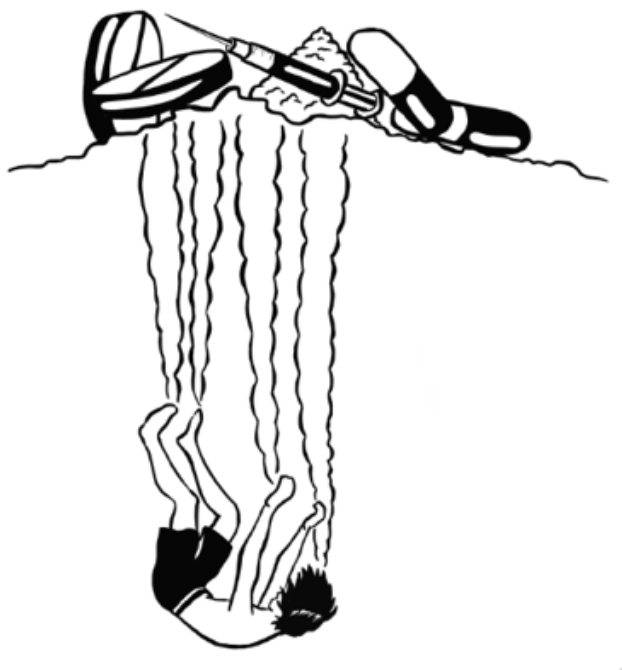
- Unfavorable family/social circumstances
- Unemployment
- Peer pressure
- Lack of self-confidence and willpower
- Poor parental guidance/supervision
- Feeling of neglect
- Bad company
- Stress
- Poverty
- Family problems/tensions
- Childhood abuse
- Worry/sorrow/anxiety
- Illiteracy
- Ignorance
- Use of alcohol and drugs at home
- Pressure of competition
- Curiosity and experimentation
- Influence of movies, social media and other multimedia
- Weddings/festivities
- Imbalanced lifestyle
- Easy money
- Contact with drug traffickers/Gang affiliations
- Lack of discipline
- Easy availability of drugs
Risk and Protective Factors
| Risk Factors | Protective Factors |
|---|---|
| Aggressive behaviour in childhood | Self-efficacy (belief in self-control) |
| Lack of parental supervision | Increased parental monitoring and support |
| Low peer refusal skills | Positive relationships |
| Drug experimentation | Interest in studies / extracurricular activities |
| Availability of drugs in school | School anti-drug policies |
| Community poverty | Neighbourhood resources and government interventions |
The First Time Drug User
The first-time drug user is usually a young person, delving into smoking or alcohol under the influence of peers, seeking acceptance, or trying to project a ‘cool’ image, or because it is the ‘in thing’ at a party or in a group setting
The allure often stems from the company of peers who engage in these behaviours. Usually, these youngsters become an integral part of such a group and are gradually initiated into smoking soft drugs like ‘pot’ or ‘weed,’ a gateway to more potent drugs like smack, heroin, etc.
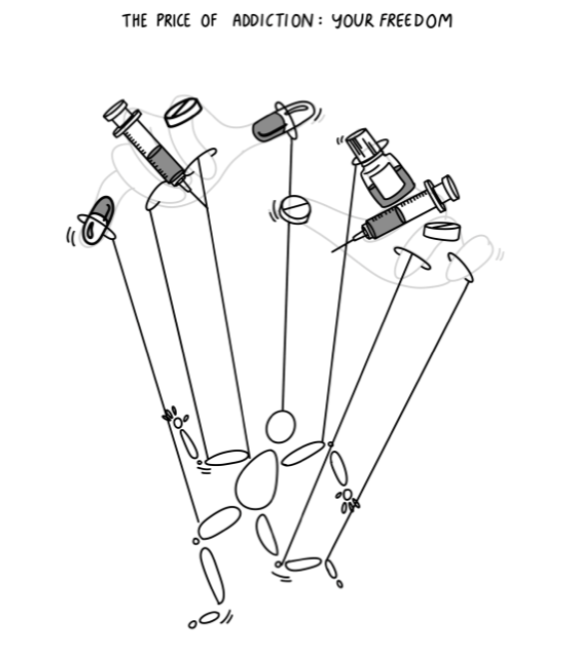
Drug traffickers exploit the susceptibility of these young individuals, enticing them with free doses of hard drugs to ‘hook’ them to the drug. Once it becomes a habit, they begin demanding money for each subsequent dose, and a drug addict is born.
The youngster is usually aware of the pitfalls of smoking, alcohol, or drugs but doesn’t have the strength of character or willpower to resist the initial experience. There is also the misguided belief that he/she can quit whenever he/she wishes, and that addiction is something that only happens to others, not themselves. They do not realize that repeated exposure to the drug produces a craving that consumes their life and even alters the way they think.
One does have a choice to say ‘No’ to anybody who makes a suggestion contrary to one’s principles and be firm about it. It just takes a little bit of determination and discipline to stay focused on pursuing and achieving one’s long-term goals, without being swayed by detrimental influences. There are so many healthy pursuits like reading, singing, listening to music, art, gardening, sports, and outdoor activities, among others which one can pursue instead.
Children with strong familial, social, and religious ties are less likely to fall prey to negative influences. Regular exercise, yoga, spiritual and moral education can keep them focused on a healthier and more meaningful life. The inclusion of subjects such as ‘adverse consequences of substance abuse’ in the CBSE syllabus and similar initiatives by the UGC in higher education institutions is a positive step which will be helpful in preventing drug use among the youth.
What is Drug Addiction?
Addiction is a state in which an individual experiences an intense craving to use drugs and becomes mentally and physically dependent on them. This overpowering urge to consume drugs takes precedence over all other responsibilities including familial obligations. It is a persistent brain disorder marked by uncontrollable drug-behaviour despite its negative consequences. It is also susceptible to relapse.
Drug addiction is characterized by a complete lack of control over the act of taking/using a substance to the extent that it becomes harmful. It has also been defined as a state of periodic or chronic intoxication, harmful to the individual or society, caused by repeated intake of habit-forming drugs.
The initial decision to take drugs is mostly voluntary. Over time, it becomes a habit which erodes one’s self-control, eventually leading to dependency. The dependency and over-consumption of drugs leads to persistent changes in the brain. Prolonged usage can also affect the brain functions, including behaviour, learning, stress, anxiety, and memory. Despite being aware of the adverse consequences, people addicted to drugs continue using them because they simply cannot resist them.
The following criteria must be satisfied for a person to be called a drug addict:
Psychological dependence: There is an overpowering desire (compulsion) to take the drug and obtain it by any means.
Physical dependence: This is evidenced by the fact that the patient exhibits ‘withdrawal symptoms’ like irrational and violent behaviour, nausea, diarrhea, watering from eyes and nose, etc., when the drug is withdrawn.
Development of tolerance: The body gets used to the drug and there is a tendency to increase the dose to achieve the same effect.
The Scientific Basis of Drug Addiction
The initial use of drugs is driven by a ‘high’ or a sensation of pleasure, elicited by stimulating specific areas of the brain which make up the brain’s ‘reward center.’ Dopamine, the neurotransmitter that produces this stimulation, is strongly associated with the feelings of pleasure and reward. Normally, activities like eating when hungry trigger dopamine release, providing a sense of pleasure and reward. However, the dopamine surge that follows the intake of alcohol and other mood-altering drugs is ten times as much as in the fulfilment of natural desires.
The most prominent feature of drug addiction is that the brain’s reward system is drastically altered by acute and/or chronic exposure to the substance, resulting in compulsive drug-seeking behaviour in vulnerable individuals. Instead of a simple pleasurable surge of dopamine, many drugs like opioids, cocaine, or nicotine cause dopamine to flood the reward pathway. The brain forms a lasting memory of this surge and associates it with those addictive substances. The addictive stimuli are characterized by two factors—positive reinforcement and an inherent perception of reward.
This association of drug intoxication with increased dopamine release leads to intense craving, resulting in compulsive, repetitive drug use. Prolonged usage results in the brain adjusting to increased dopamine release, leading to a subsequent decrease in the dopamine receptors.
Reduced dopamine receptors result in a state called ‘anhedonia’ or loss of pleasure in the activities that were once enjoyed. The depressive feeling of anhedonia can drive a user to take drugs in a reactive attempt to feel pleasure again. Self-control is lost by long term drug abuse because of erosion of grey matter in the prefrontal cortex.
The Physical Impact of Drug Addiction
Drug addiction can produce severe and wide-ranging physical health problems involving the following systems:
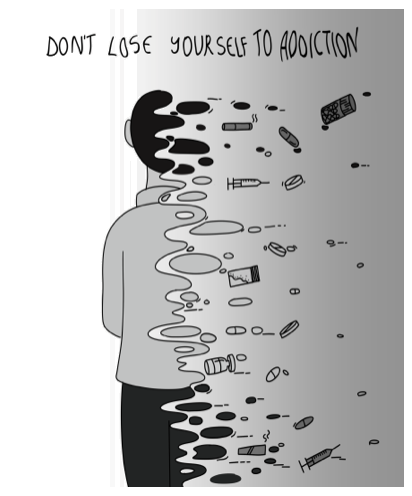
- Cardiovascular System: Increased heart rate and irregular rhythm, high blood pressure, and increased risk of heart attack or stroke. Cocaine and methamphetamine can cause severe damage to the heart and blood vessels.
- Respiratory System: Inhalation of drugs like cocaine, heroin and methamphetamine can lead to chronic bronchitis, asthma, pneumonia, and an increased risk of lung infections
- Liver and Kidneys: Inflammation of the liver, hepatitis, cirrhosis and kidney damage/failure is caused by many oral and injected drugs.
- Gastrointestinal System: Gastric ulcers, gastrointestinal bleeding, malnutrition, and weight loss.
- Immune System: Drugs weaken immunity, making addicts more susceptible to infections as well as weakening the body’s ability to heal itself.
- Central Nervous System: Cognitive impairment, memory loss, decreased attention span, difficulty in decision-making and impulse-control. Some drugs cause seizures, tremors, or movement disorders.
- Hormonal and Reproductive System: Disruption of normal hormonal function leading to reproductive issues like infertility, menstrual irregularities and sexual dysfunction in females and decreased testosterone levels and decreased sperm production in males.
- Dental and Oral Health: Cocaine and methamphetamine can lead to tooth decay, gum disease, tooth loss, and overall deterioration of oral health.
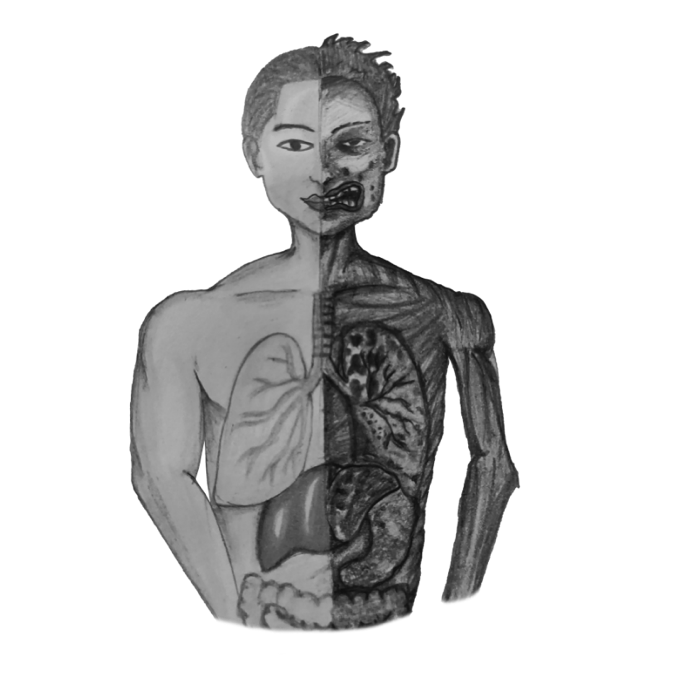
Signs and Symptoms of Drug Addiction
- A drug addict:
- Feels a strong urge to consume drugs every day, either once or multiple times
- Strives to secure a continuous supply of drugs, resorting to begging, borrowing, or stealing
- Has no self-control in consuming drugs and often tends to consume more than necessary
- Consumes drugs regularly despite being aware of their adverse consequences
- Can experience withdrawal symptoms at any time, even in the presence of family and friends
- Often loses interest in previously enjoyed activities
- Physical warning signs of substance use disorder (SUD) include:
- Bloodshot eyes; pupils larger or smaller than usual
- Changes in appetite or sleep patterns
- Deterioration of physical appearance and personal grooming habits
- Runny nose or sniffing
- Sudden weight loss or weight gain
- Tremors, slurred speech, or impaired coordination
- Unusual odors on breath, body, or clothing
- Behavioural warning signs of SUD are:
- Experiencing difficulties in one’s relationships
- Engaging in secretive or suspicious behaviour
- Frequently getting into legal trouble, including fights, accidents, illegal activities, and driving under the influence of drugs
- Neglecting responsibilities at work, school or home, including neglecting one’s children
- Sudden changes in friends, favourite hangouts and hobbies
- Unexplained need for money or financial problems, often leading to borrowing or stealing money
- Using drugs under dangerous conditions (e.g., driving while using drugs, using dirty needles, having unprotected sex)
- Increased drug tolerance (requiring more of the drug to experience the same effect which was achieved with smaller quantities earlier)
- Misusing drugs to avoid or relieve withdrawal symptoms (e.g., nausea, restlessness, insomnia, depression, sweating, shaking, anxiety)
- Loss of control over drug misuse (using more than intended and unable to stop)
- Life revolving around drug abuse (constantly thinking about using, figuring how to get more, or recovering from use)
- Abandoning enjoyable activities like hobbies, sports, and socializing to consume drugs
- Continuing to abuse drugs despite negative consequences (e.g., blackouts, infections, mood swings, depression, paranoia)
- Psychological warning signs of SUD are:
- Appearing fearful, anxious, or paranoid without reason
- Lacking motivation, appearing tired or “spaced out”
- Periods of unusual increased energy, nervousness, or instability
- Sudden mood swings, increased irritability, or angry outbursts
- Unexplained changes in personality or attitude
- Signs and symptoms of using some specific drugs are:
- Depressants (like Xanax, Valium, GBH):
- Contracted pupils
- Drunken-like effects
- Difficulty concentrating
- Clumsiness
- Impaired judgment
- Slurred speech
- Sleepiness
- Inhalants (like glues, aerosols, vapors):
- Watery eyes
- Impaired vision, memory, and thought
- Secretions from the nose or rashes around the nose and mouth
- Headaches or nausea
- Appearance of intoxication
- Drowsiness
- Poor muscle control
- Changes in appetite
- Anxiety
- Irritability
- Lots of cans/aerosols in the trash
- Hallucinogens (like LCD, PCP):
- Dilated pupils
- Bizarre and irrational behaviour including paranoia, aggression, hallucinations
- Mood swings
- Detachment from people
- Absorption with self or other objects
- Slurred speech
- Confusion
- Heroin:
- Contracted pupils
- No response of pupils to light
- Needle marks
- Sleeping at unusual times
- Sweating
- Vomiting
- Coughing, sniffing, twitching
- Loss of appetite
- Stimulants (like amphetamines, cocaine, crystal meth):
- Dilated pupils
- Hyperactivity
- Euphoria
- Irritability
- Anxiety
- Excessive talking, followed by depression or excessive sleeping at odd times
- Spending long periods of time without eating or sleeping
- Weight loss
- Dry mouth and nose
- Depressants (like Xanax, Valium, GBH):
- Certain common indicators of drug abuse to look out for are:
- Irritability, anxiety, or paranoia
- Increased heart rate, blood pressure, and temperature
- Panic attacks
- Nausea or vomiting with weight loss
- Impaired judgement
- Nasal congestion and damage to the mucous membrane of the nose (if snorting drugs)
- Mouth sores, gum disease, and tooth decay from smoking drugs—“Meth mouth”
- Insomnia
- Depression as the effect of the drug wears off
- Problems thinking clearly
- Loss of muscle control
- Hallucinations
- Delirium
- Psychotic and violent behaviour
- Confusion
- Altered sense of visual, auditory, and taste perception
- Decreased mental sharpness
- Poor performance at school/work
- Ongoing cough and frequent lung infections
- Human Immunodeficiency Virus (HIV) infection
- Hepatitis ‘B’ Virus (HBV) or Hepatitis ‘C’ Virus (HCV) infections
- Red eyes
- Dry mouth
- Poor muscular coordination
- Difficulty concentrating or remembering
- Slowed reaction time
Treatment of Drug Addiction
- Drug Detoxification
The first and toughest step towards recovery is recognizing that one has a problem and deciding to make the change. Drug addiction is both a social and medical problem and needs to be managed holistically. De-addiction is a scientific process administered, monitored, and managed by professionals, and requires full cooperation by the addict and his/her family in order to be successful. It involves:- Identification of drug addicts and their motivation for drug detoxification
- Full motivation and cooperation by the addict throughout
- Supervised, institutional, or hospital care for detoxification
- Post detoxification, counseling and follow-up based on clinic and home visits
- Psychotherapy
- Family and social support and care
- Rehabilitation
- Social reintegration
- Changes in environment (home, school, college, social circle). The patient must make a complete break from his/her earlier group; otherwise the chances of relapse are very high
- Central Government Initiatives
Different government departments and ministries work together to address the problem of drug abuse. There are 3 broad approaches—supply reduction, demand reduction, and harm reduction:- The ‘supply reduction’ works towards reducing availability of illicit drugs through various measures
- The ‘demand reduction’ deals with reducing the demand for drugs through prevention, treatment, and rehabilitation
- ‘Harm reduction’ in India is primarily prevention of HIV among those who inject drugs
A Drug De-Addiction Program (DDAP) was initiated in 1988 under the Ministry of Health and Family Welfare, Government of India for treatment of SUDs. De-Addiction Centers (DACs) have been established in government hospitals under the DDAP with a one-time financial grant by the central government, with recurring expenses borne by the state governments. Nonspecialist medical officers in government hospitals have been trained under the DDAP, and various training materials have been developed. A Drug Abuse Monitoring System has been developed to track the pattern of drug use among individuals seeking treatment in the DACs. Monitoring and evaluation exercises show that this model of shared center-state responsibility is partially successful. The establishment of drug treatment clinics as a pilot project, with a focus on outpatient (OPD) treatment, and direct support from the DDAP for staff and medicines is showing encouraging results.
- The situation in Punjab:
There are 15 Drug De-Addiction Centres (DDCs) supported by the Indian Red Cross Society where the duration of treatment is one month. As per the Health Department, 2.5 lac patients are registered for drug addiction treatment. There are 208 Outdoor Opioid Assisted Treatment (OOAT), including 16 in jails. Every month, around 16.5 lac patients visit the clinics. There is an increasing number of private DDCs emerging in smaller towns, villages, and cities, where the duration of treatment is approximately 6 months. All DDCs conduct regular sessions of individual, group, and family counselling for patients. More patients were found to be treated at Red Cross Centers than at private centers.
A majority of patients dropped out of the DDCs due to personal reasons and lack of family support. Home visits were conducted by the counsellors for patients discharged from Red Cross DDCs, but not from the private DDCs. All the centers organized outreach camps in both urban and rural areas for preventive education, raising awareness, registration of addicts, counselling, and detoxification/de-addiction treatment. No vocational rehabilitation was given at any of the DDCs.
Recent initiatives planned by the Punjab Government include:
- The Home Department is set to launch a campaign to disrupt the drug supply chain, resulting in a potential surge of patients at de-addiction centers and OOATs. The Health Department has been asked to increase the number of OOATs to 500 immediately
- The centers are planned to be established within the existing infrastructure, including Primary Health Centers (PHCs) and Community Health Centers (CHCs)
- A center is planned to be situated within a radius of every 5-10 kilometres
- The Health Department has been directed to create a three-month buffer stock of the de-addiction drug (buprenorphine) at all state drug warehouses and a onemonth buffer stock at the Civil Surgeon’s office
- A four-day training program on de-addiction treatment has been scheduled for all medical officers (MOs), including those posted at the PHC level
- As per the revised plan, the treatment will be initiated by a psychiatrist, with subsequent follow-ups to be conducted at the OOAT clinics
- A Drug Abuse Prevention Officer (DAPO) program was launched on 23 March 2018 to engage communities in preventing drug abuse at the grassroots level, aiming to cover each village/locality. Over 6.2 lac DAPOs are registered in Punjab, including 1.6 lac officials and 4.6 lac citizen volunteers
- A buddy program was launched by the Punjab Education Department on 15 August 2018 to prevent drug abuse among students by providing knowledge, teaching behavioural skills, and establishing a self/group monitoring and support system. Official data pegs the number of buddy groups to be 8.6 lac in 17,416 government and private educational institutions
- In August 2018, the Punjab government launched ‘Comprehensive Action Plan against Drug Abuse (CADA)’ to coordinate the endeavours of various government departments and engage the entire society in combatting the menace of drug abuse.
Preventing a Relapse
An addict who has been treated for addiction and has been rehabilitated in society must:
- Avoid high-risk situations
- Seek immediate assistance if he/she uses the drug again
- Talk to his/her health/mental health care provider or someone else who can offer help right away.
Prevention of Drug Addiction
In the family setting:
- Communication: Maintain open channels of communication with your children. Talk to them about the risks of drug use and misuse in a supportive and understanding manner.
- Listen: Be a good and attentive listener. Encourage your children to share their fears, concerns, doubts, and experiences, including peer pressure instances. Offer support and guidance as they navigate through these challenges.
- Keep them busy with some outdoor sports and hobbies when they are not engaged in scholastic activity.
- Set a good example: Don’t misuse alcohol, smoke, or use addictive drugs yourself. Children of parents who misuse drugs are at a greater risk of drug addiction.
- Spend quality time with your children. Participate in their daily activities and let them know that you are there for them, assuring them of your constant availability.
- Foster a stronger bond: Work on strengthening your relationship with your children as it reduces the likelihood of drug use/misuse.
- Acknowledge and appreciate their efforts and accomplishments, however small they may seem. Praise and encouragement can make a world of difference.
- Discipline: Inculcate a sense of discipline in your children and teach them positive values.
- Role modelling: Try to become a positive role model for your children. Practice what you preach to them because actions speak louder than words.
Mass/Social Approach:
- Raise awareness about the problem by educating both the specific target groups and general public through electronic and print media.
- Incorporate education about the perils of drug use in school and college curricula.
- Establish self-help groups and Non-Governmental Organizations (NGOs) to help educate youth about the harmful effects of drugs.
- Support law enforcement agencies in keeping society drug-free.
- Organize sporting, cultural, and religious functions to engage and divert the attention of youngsters away from drugs.
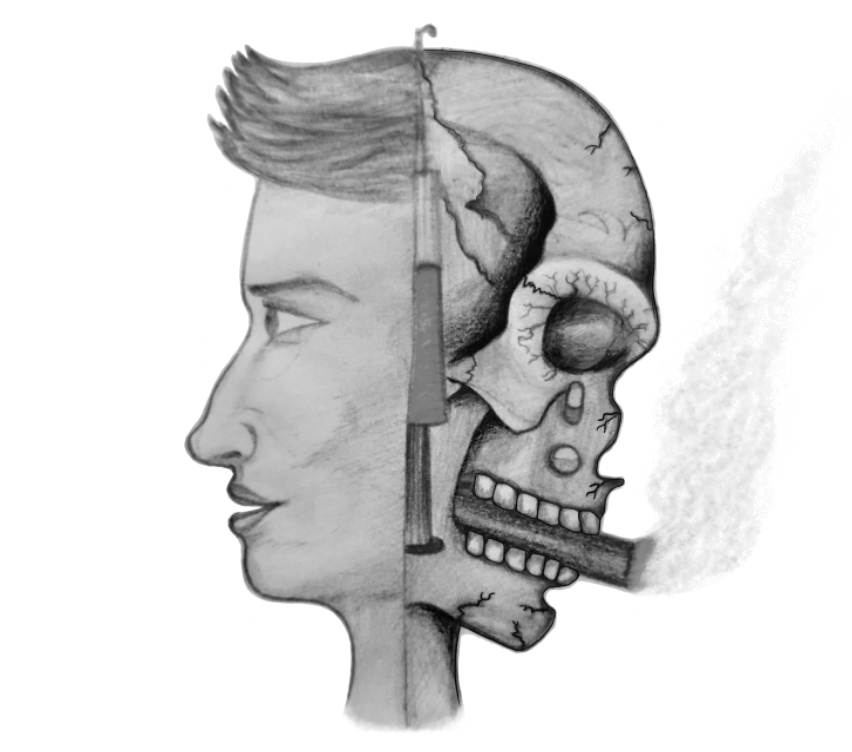
Frequently Asked Questions (FAQs)
Let us conclude by putting together a few FAQs about drug addiction which will help us recall a few facts:
Is drug addiction a disease or disability?
Drug addiction is considered a disease because it involves changes in brain structure and function, leading to compulsive drug use.
What is the power of addiction?
The power of addiction lies in its ability to control a person’s behaviour, thoughts, and emotions, making it difficult to stop using drugs.
How fast do drugs work?
The speed with which drugs work depends upon their form and route of administration. Inhalers and intravenous injections act within minutes, while pills might take longer.
What is drug ‘first pass effect’?
The ‘first pass effect’ occurs when drugs are metabolized in the liver after they are absorbed, reducing the quantity that enters the bloodstream.
Is drug addiction a brain disease?
Yes, drug addiction is a brain disease. It alters brain structure and function, affecting decision-making and impulse control.
Can addiction be genetic?
Yes. Genetics can increase a person’s risk of addiction, although environmental factors and personal choices also play a part.
How can we treat a case of drug addiction?
Treating drug addiction involves therapy, medication, community support, and education. Early intervention and awareness are key.
How do drugs work in the body?
Drugs interact with cells in the body after targeting receptors and enzymes to produce their intended effects.
How does addiction affect the brain?
Addiction alters the brain’s reward circuit leading to intense cravings. Over time, it impacts judgement, decision-making, learning, and memory.
How does addiction happen?
Addiction occurs when repeated drug use changes the brain, making the substance or behaviour top priority, leading to compulsive use despite harmful consequences.
What is drug addiction in simple words?
Addiction is defined as not having control over doing, taking, or using something to the point where it could be harmful to you.